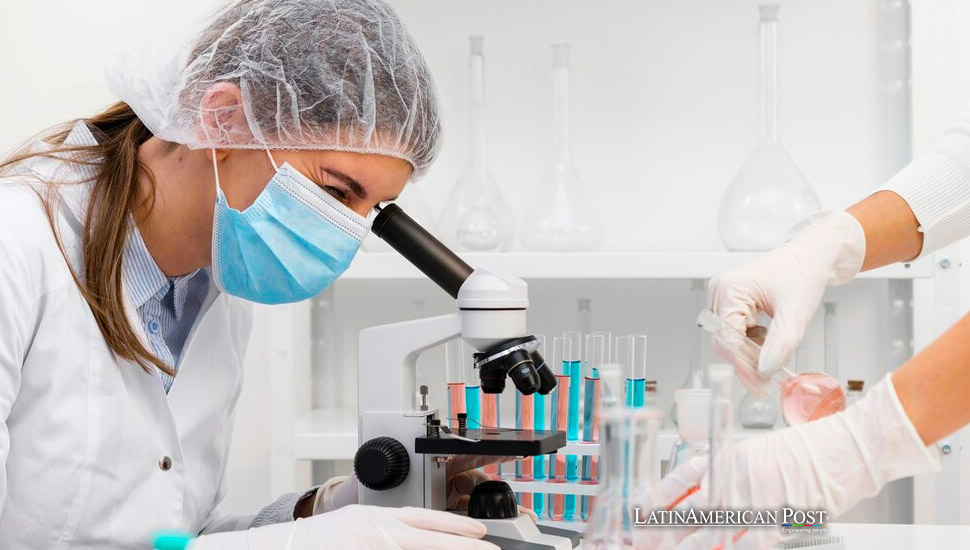Brazil’s Bold Move for Pathogen Research and Safety

Brazil’s new Orion facility, set to become Latin America’s first maximum-security biosciences lab, is a significant step in pathogen research. While the lab promises to enhance the region’s scientific autonomy, it raises concerns about costs, safety, and oversight.
In the heart of Brazil’s scientific community, construction has begun on what will soon be Latin America’s first biosafety level-4 (BSL-4) laboratory, Orion. This cutting-edge facility, to be located at the Brazilian Center for Research in Energy and Materials (CNPEM) in Campinas, marks a significant milestone for the region. Designed to handle the world’s deadliest pathogens—those without treatments or vaccines exist—Orion is expected to open its doors in 2026, with entire operations by 2028.
The need for such a laboratory in Latin America has become increasingly urgent. As highlighted in a report by Nature, experts like virologist Flávio Fonseca from the Federal University of Minas Gerais emphasize that the region is at high risk for emerging infectious diseases. “We have seen the number of epidemic, even pandemic, outbreaks increase in the last 100 years,” Fonseca told Nature. The rapid destruction of the Amazon rainforest and climate change have led to more frequent interactions between humans and wildlife, increasing the likelihood of zoonotic diseases—diseases transmitted from animals to humans.
Fernando Spilki, a veterinary virologist at Feevale University, also expressed his concern to Nature, noting that Latin America is “sitting on a powder keg” of potential pathogens. The ongoing deforestation in the Amazon, driven by agricultural expansion, has brought humans closer contact with previously isolated animal species, some of which carry unknown viruses. The region’s rapidly changing environment only heightens the need for a facility like Orion, where scientists can quickly and safely study emerging threats. “We need a laboratory like this to give quick responses,” Spilki emphasized.
Orion’s Unique Capabilities and Scientific Promise
Once completed, Orion will be Latin America’s first BSL-4 lab and a groundbreaking facility globally. It will be the first BSL-4 lab equipped with a synchrotron, a particle accelerator that produces high-powered radiation for imaging. This unique combination will allow scientists to use X-ray beamlines derived from CNPEM’s existing synchrotron, Sirius, to examine the structures of deadly pathogens and understand how they infect cells and tissues.
Integrating a synchrotron with a maximum-containment laboratory is unprecedented and presents a significant leap in research capabilities. As Nature reported, Harry Westfahl, director of the Sirius facility, acknowledged the challenges of integrating these advanced technologies into a BSL-4 environment. The synchrotron beams, essential for high-precision imaging, must pass through an optically transparent recess in a wall separating the synchrotron from the BSL-4 lab. This barrier must withstand the stringent disinfection protocols of the BSL-4 environment while maintaining the optical quality necessary for research. “We found a solution,” Westfahl told Nature, underscoring the innovative efforts required to bring this project to fruition.
Orion’s synchrotron-enhanced research capabilities will be particularly valuable for studying pathogens like the Sabiá virus, a haemorrhagic fever-causing arenavirus first reported in São Paulo. Studying such dangerous viruses requires Brazilian scientists to travel abroad, often leading to delays in diagnostics and treatment development. With Orion, Brazil will gain the autonomy to conduct this vital research domestically, accelerating the response to outbreaks and potentially saving lives.
Challenges in Construction, Training, and Security
Building a BSL-4 lab like Orion is complex and expensive, and the challenges extend far beyond construction. The safety protocols required for operating such a facility are among the most stringent in the world. Researchers working in the lab must don specially designed suits connected to independent air supplies and undergo rigorous decontamination processes both before entering and after leaving the lab. These protocols are essential for preventing accidental release of the deadly pathogens studied within.
Training staff to work in this high-risk environment is another significant hurdle. As Nature noted, Brazil lacks a regulatory framework specific to BSL-4 laboratories. Tatiana Ometto, CNPEM’s high-containment biosafety specialist, acknowledged this gap in the Nature report, stating that “discussions are taking place” to establish oversight mechanisms. The Ministry of Health has formed a working group to monitor the lab’s development and propose necessary regulations. However, the lack of infrastructure for such high-level containment in Latin America means that extensive training and preparation will be required to ensure the safe operation of Orion.
Security is another critical concern. The COVID-19 pandemic has shown that the global community remains sensitive to the risks posed by laboratories handling dangerous pathogens. The origins of SARS-CoV-2, the virus responsible for COVID-19, are still debated, with some scientists suggesting that a lab leak in Wuhan, China, cannot be entirely ruled out. In response to these concerns, Nature reported that CNPEM works closely with international experts to ensure that Orion meets the highest biosecurity standards. Juliette Morgan, South America regional director for the US Centers for Disease Control and Prevention, told Nature that the CNPEM team has “an obvious understanding of the implications of a BSL-4” lab and seeks advice to address potential gaps.
Financial Concerns and the Future of Orion
Despite Orion’s excitement, the cost of building and maintaining such a facility has raised concerns among scientists and policymakers. The Brazilian government has committed $1 billion reais (about US$180 million) to Orion’s construction, but the ongoing operation costs will be substantial. According to Nature, maintaining a BSL-4 lab is an expensive undertaking. For example, the Galveston National Laboratory in Texas, a BSL-4 facility, requires nearly US$12 million annually for maintenance and operations, including $2 million for 24-hour security.
Odir Dellagostin, president of the Brazilian National Council for State Funding Agencies, expressed concerns to Nature about the financial implications of Orion. “There’s no doubt about the need for a laboratory of this kind in Brazil,” he said, “but we lack the funds for other significant research projects.” The fear is that the high costs of maintaining Orion could divert resources away from other critical areas of scientific research in Brazil, particularly when the country is grappling with economic challenges.
However, CNPEM director Antônio José Roque da Silva remains optimistic about Orion’s future. Speaking to Nature, he noted that Orion’s construction costs are significantly lower than those of similar facilities in the United States, which can run up to a billion dollars. By investing in cutting-edge research infrastructure like Orion, Roque da Silva believes Brazil can achieve greater scientific autonomy, reducing its reliance on international labs for pathogen research. Nevertheless, he acknowledged that securing ongoing maintenance funding will be challenging, and CNPEM is already seeking additional support from other ministries and funding sources.
Looking ahead, Orion’s success will depend on more than just its construction. The facility must develop a sustainable financial model, secure regulatory approvals, and build a team of highly trained professionals to operate it safely. If these challenges can be met, Orion has the potential to become a cornerstone of pathogen research in Latin America, contributing not only to regional health security but also to global efforts to prevent and respond to emerging infectious diseases.
Also read: Chile and Brazil Unite for Space Cooperation and Equality
Brazil’s Orion facility represents a bold step forward for Latin American science. By providing a secure environment to study the most dangerous pathogens, Orion will enable researchers to respond more quickly to outbreaks, develop new treatments, and deepen our understanding of infectious diseases. However, the journey from groundbreaking to entire operation is fraught with challenges, from ensuring biosecurity to securing long-term funding. As the world watches, Brazil’s scientific community must navigate these obstacles carefully to realize Orion’s full potential.





